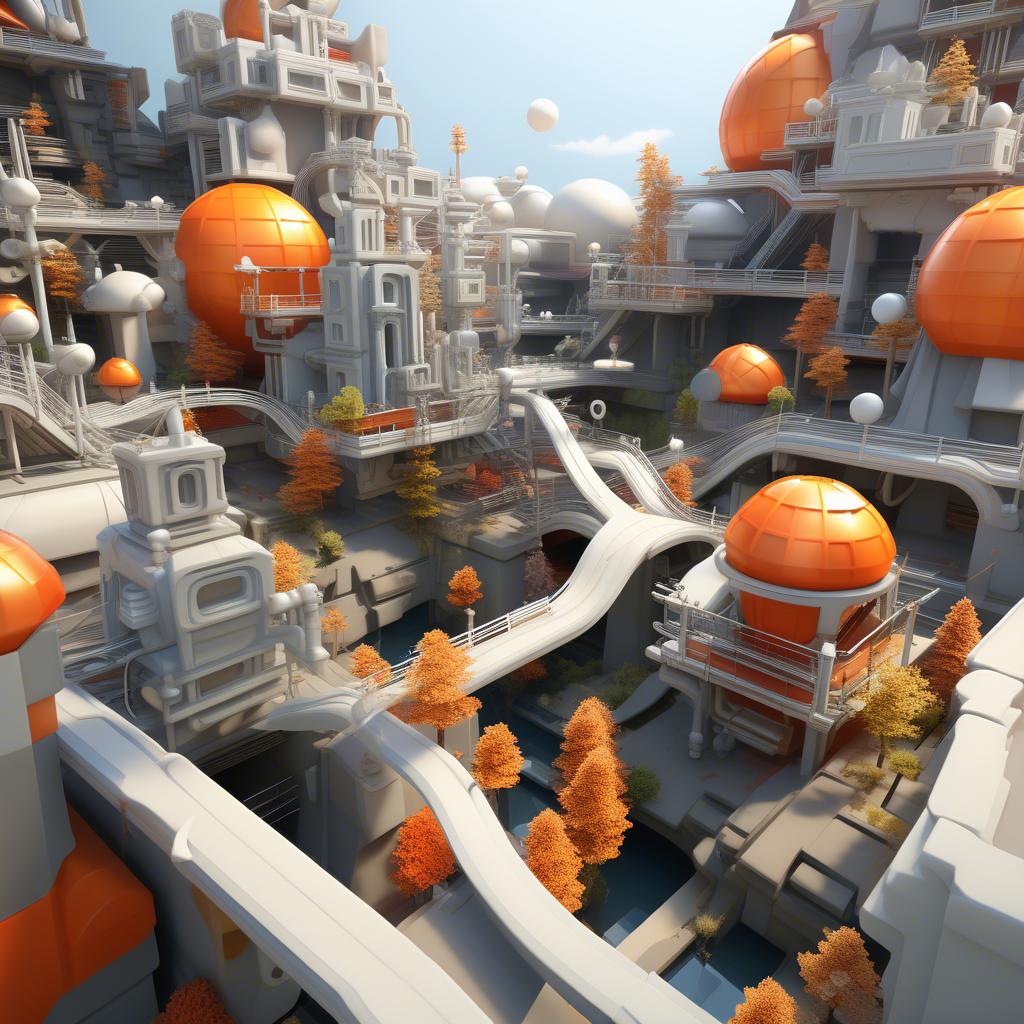On The Fly Meshes
Hello Coders! 👾
I was working on a project in Wonderland Engine today and wanted to create a mesh at runtime. It’s a very powerful feature, but might seem a bit complicated at first. So, let me walk you through a simple example of creating a mesh. Generating geometry on the fly is incredibly useful for all kinds of effects.
Here’s the code and a breakdown of what it does:
import {
Component,
Material,
MeshAttribute,
MeshComponent,
MeshIndexType,
} from '@wonderlandengine/api';
import {property} from '@wonderlandengine/api/decorators.js';
export class OnTheFlyMeshTest extends Component {
static TypeName = 'on-the-fly-mesh-test';
@property.material()
material?: Material;
private _meshComp: MeshComponent;
start() {
this._meshComp = this.object.addComponent(MeshComponent);
const vertexCount = 4;
const indexData = new Uint16Array([0, 1, 2, 1, 3, 2]);
const mesh = this.engine.meshes.create({
indexData,
vertexCount,
indexType: MeshIndexType.UnsignedInt,
});
const positions = mesh.attribute(MeshAttribute.Position);
if (positions) {
positions.set(0, [-0.5, -0.5, 0.0]);
positions.set(1, [0.5, -0.5, 0.0]);
positions.set(2, [-0.5, 0.5, 0.0]);
positions.set(3, [0.5, 0.5, 0.0]);
}
const texCoords = mesh.attribute(MeshAttribute.TextureCoordinate);
if (texCoords) {
texCoords.set(0, [0.0, 0.0]);
texCoords.set(1, [1.0, 0.0]);
texCoords.set(2, [0.0, 1.0]);
texCoords.set(3, [1.0, 1.0]);
}
const normals = mesh.attribute(MeshAttribute.Normal);
if (normals) {
normals.set(0, [0.0, 0.0, 1.0]);
normals.set(1, [0.0, 0.0, 1.0]);
normals.set(2, [0.0, 0.0, 1.0]);
normals.set(3, [0.0, 0.0, 1.0]);
}
mesh.update();
this._meshComp.mesh = mesh;
this._meshComp.material = this.material;
}
}
Step-by-Step Breakdown
Let’s review the code in the start method, since the rest is just there for completeness.
-
Add a Mesh Component: We start by adding a
MeshComponentto the object.this._meshComp = this.object.addComponent(MeshComponent); -
Define Vertex and Index Data: We specify our vertex count and index data, which tells the engine how vertices are connected to form triangles.
const vertexCount = 4; const indexData = new Uint16Array([0, 1, 2, 1, 3, 2]); -
Create Mesh: Using the defined vertex and index data, we create the mesh.
const mesh = this.engine.meshes.create({ indexData, vertexCount, indexType: MeshIndexType.UnsignedInt, }); -
Set Mesh Attributes:
-
Positions: We define the positions of our vertices.
const positions = mesh.attribute(MeshAttribute.Position); if (positions) { positions.set(0, [-0.5, -0.5, 0.0]); positions.set(1, [0.5, -0.5, 0.0]); positions.set(2, [-0.5, 0.5, 0.0]); positions.set(3, [0.5, 0.5, 0.0]); } -
Texture Coordinates: We set the texture coordinates for our vertices.
const texCoords = mesh.attribute(MeshAttribute.TextureCoordinate); if (texCoords) { texCoords.set(0, [0.0, 0.0]); texCoords.set(1, [1.0, 0.0]); texCoords.set(2, [0.0, 1.0]); texCoords.set(3, [1.0, 1.0]); } -
Normals: We define the normals for our vertices, which are necessary for lighting calculations.
const normals = mesh.attribute(MeshAttribute.Normal); if (normals) { normals.set(0, [0.0, 0.0, 1.0]); normals.set(1, [0.0, 0.0, 1.0]); normals.set(2, [0.0, 0.0, 1.0]); normals.set(3, [0.0, 0.0, 1.0]); }
-
-
Update the Mesh: After modifying the attributes, we tell the engine to update the vertex data on the GPU.
mesh.update(); -
Apply Mesh and Material: Finally, we apply the created mesh and material to our mesh component.
this._meshComp.mesh = mesh; this._meshComp.material = this.material;
That’s it! By following these steps, you can dynamically create and modify meshes in Wonderland Engine. This opens up a lot of possibilities for real-time content generation in your WebXR and 3D web projects.
Happy Coding! 🚀






